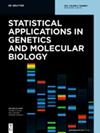如果我们在多因素实验中分析RNA-seq数据时忽略随机效应会怎样
IF 0.9
4区 数学
Q3 Mathematics
Statistical Applications in Genetics and Molecular Biology
Pub Date : 2016-04-01
DOI:10.1515/sagmb-2015-0011
引用次数: 23
摘要
识别不同条件下的差异表达(DE)基因是RNA-seq数据分析的主要目标之一。虽然在早期的两组小样本量比较中产生了大量的RNA-seq数据,但越来越多的RNA-seq数据是在复杂的实验设计中产生的,如分裂图设计和重复测量设计。这类实验产生的数据传统上是用混合效应模型来分析的。因此,分析来自此类设计的RNA-seq数据的适当统计方法应该是广义线性混合模型(GLMM)或允许随机效应的类似方法。然而,文献中分析这类数据的常见做法,要么将随机效应视为固定效应,要么完全忽略实验设计,只关注使用部分数据的两组比较。在本文中,我们研究忽略随机效应在分析RNA-seq数据时的影响。我们通过模拟研究和实际数据分析,将标准GLMM模型与忽略随机效应的方法进行了比较,从而实现了这一目标。我们的研究表明,在多因素实验中,忽略随机效应可能导致首选基因的假阳性增加,或者在名义FDR水平受到控制时导致功率降低。本文章由计算机程序翻译,如有差异,请以英文原文为准。
What if we ignore the random effects when analyzing RNA-seq data in a multifactor experiment
Abstract Identifying differentially expressed (DE) genes between different conditions is one of the main goals of RNA-seq data analysis. Although a large amount of RNA-seq data were produced for two-group comparison with small sample sizes at early stage, more and more RNA-seq data are being produced in the setting of complex experimental designs such as split-plot designs and repeated measure designs. Data arising from such experiments are traditionally analyzed by mixed-effects models. Therefore an appropriate statistical approach for analyzing RNA-seq data from such designs should be generalized linear mixed models (GLMM) or similar approaches that allow for random effects. However, common practices for analyzing such data in literature either treat random effects as fixed or completely ignore the experimental design and focus on two-group comparison using partial data. In this paper, we examine the effect of ignoring the random effects when analyzing RNA-seq data. We accomplish this goal by comparing the standard GLMM model to the methods that ignore the random effects through simulation studies and real data analysis. Our studies show that, ignoring random effects in a multi-factor experiment can lead to the increase of the false positives among the top selected genes or lower power when the nominal FDR level is controlled.
求助全文
通过发布文献求助,成功后即可免费获取论文全文。
去求助
来源期刊
CiteScore
1.20
自引率
11.10%
发文量
8
审稿时长
6-12 weeks
期刊介绍:
Statistical Applications in Genetics and Molecular Biology seeks to publish significant research on the application of statistical ideas to problems arising from computational biology. The focus of the papers should be on the relevant statistical issues but should contain a succinct description of the relevant biological problem being considered. The range of topics is wide and will include topics such as linkage mapping, association studies, gene finding and sequence alignment, protein structure prediction, design and analysis of microarray data, molecular evolution and phylogenetic trees, DNA topology, and data base search strategies. Both original research and review articles will be warmly received.

 求助内容:
求助内容: 应助结果提醒方式:
应助结果提醒方式:


